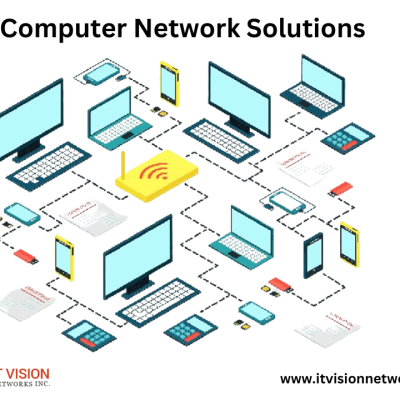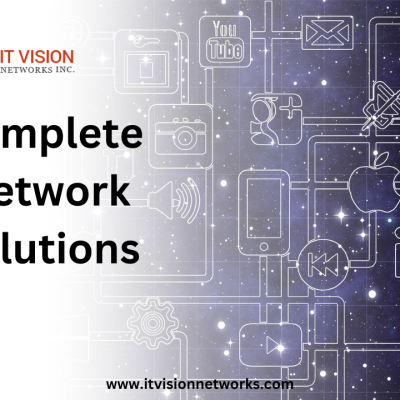Understanding the importance of an IT budget is crucial for optimizing your spending and maximizing the value of your investments. From prioritizing equipment purchases to negotiating with suppliers, there are numerous strategies to help you stay within budget without compromising on quality. In this blog, we’ll explore critical factors affecting IT budgeting, common challenges in budget management, and the benefits of effective budgeting. We’ll also delve into practical tips for choosing the right IT equipment within budget, negotiating with suppliers for better pricing, and implementing cost-control measures. Additionally, we’ll discuss the role of technology in budget management and how to measure the ROI on IT equipment purchases. Whether you’re facing unexpected IT needs or navigating growth and downturns, we’ll also explore ways to adapt to changes in IT budgeting. For those seeking expert advice, we’ll cover the importance of consulting with IT financial specialists and engaging with equipment resellers for budget guidance. Understanding the Importance of IT Budgeting
When it comes to managing your company’s finances, understanding the importance of IT budgeting is crucial. It allows you to allocate resources effectively and decide which equipment to purchase. By clearly grasping your IT budget, you can ensure that you are investing in technology that will support your business goals and enhance productivity.
Effective IT budgeting also helps to identify critical factors that may impact your financial planning, such as market trends, technological advancements, and potential risks. This proactive approach enables you to adapt to changes in the industry and stay ahead of the competition. Additionally, it provides a framework for monitoring expenses and ensuring that your investments align with your overall strategic objectives. By recognizing the benefits of effective IT budgeting – including improved cost control, risk management, and resource optimization – you can position your company for long-term success. With a well-defined budget allocation for IT equipment purchases, you can maximize value while minimizing waste. Ultimately, this empowers you to make sound financial decisions that drive innovation and growth within your organization.
Strategies for Optimizing IT Budget Allocation
When optimizing your IT budget allocation, prioritizing equipment purchases is essential. By carefully evaluating your organization’s immediate needs and focusing on acquiring the necessary hardware and software, you can ensure that the most critical components are in place without overspending. This strategic approach allows you to allocate funds where needed most, resulting in a more balanced IT budget.
In addition to prioritization, implementing cost-saving measures can significantly impact your IT budget allocation. Utilizing energy-efficient equipment, exploring open-source software options, and consolidating resources are just a few ways to reduce overall costs while still meeting operational requirements. These measures help stretch your budget further and contribute to sustainable and efficient IT practices.
Leveraging vendor relationships for better pricing is another effective strategy for optimizing IT budget allocation. Building solid partnerships with trusted suppliers can lead to negotiated discounts or special pricing arrangements that ultimately benefit your organization’s bottom line. You can secure competitive pricing on essential IT equipment by fostering these relationships and staying informed about industry trends and offerings.
Choosing the Right IT Equipment Within Budget
When choosing the right IT equipment within budget, plenty of exciting options exist. You can start by researching cost-effective IT equipment that meets your organization’s needs without breaking the bank. This could involve exploring different brands and models to find the best value for your money.
Another thrilling aspect of choosing IT equipment within budget is evaluating the long-term value versus the upfront cost. This means weighing the benefits and potential savings of investing in higher quality, slightly more expensive equipment versus opting for cheaper options that may last less long or require frequent repairs or replacements. For those looking for an exhilarating challenge, considering refurbished or pre-owned IT equipment can be a great way to stretch your IT budget while still getting reliable technology.
Negotiating with IT Equipment Suppliers
When it comes to negotiating with IT equipment suppliers, you have the opportunity to showcase your bargaining skills and secure the best deals for your organization. Whether it’s through face-to-face meetings or virtual negotiations, understanding effective negotiation tactics and strategies can give you the upper hand. By being well-prepared and knowledgeable about market prices, product specifications, and competitor offerings, you can confidently navigate discussions with suppliers to achieve favourable terms.
One powerful approach to driving down costs is leveraging volume purchasing. By consolidating your orders or committing to certain purchases over time, you can negotiate discounts or special pricing arrangements from suppliers. This not only helps in reducing immediate expenses but also creates a long-term partnership that benefits both parties. Moreover, seeking flexible payment terms such as extended credit periods or instalment options can ease the financial burden while ensuring that your organization gets access to essential IT equipment without straining the budget.
Be bold and ask for additional perks or bonuses when finalizing deals with IT equipment suppliers. Many vendors are willing to throw in extra services like free shipping, installation support, extended warranties, or complimentary accessories as an incentive for closing the deal. These added value propositions can contribute significantly towards cost savings and enhance your IT budget’s overall return on investment.
Implementing Cost Control Measures for IT Equipment
When it comes to managing your IT budget, implementing cost-control measures for purchasing equipment is essential. By monitoring and analyzing IT spending, you can identify areas where expenses can be reduced or optimized. This allows you to make informed decisions when allocating funds for new equipment, ensuring that every dollar spent contributes to the overall efficiency of your IT infrastructure.
Enforcing IT procurement policies is another effective way to maintain control over your IT budget. You can prevent unnecessary or unauthorized spending by establishing clear guidelines and procedures for purchasing equipment. This helps streamline the procurement process and ensures that all purchases are aligned with the organization’s strategic objectives and financial constraints.
In addition, implementing centralized IT purchasing can help optimize costs by consolidating buying power and negotiating better deals with suppliers. Centralized purchasing also provides greater visibility into all equipment acquisitions across the organization, enabling better coordination between departments and reducing redundant purchases. By leveraging economies of scale through centralized procurement, organizations can achieve significant savings while maintaining high standards for their IT equipment.
Leveraging Technology for Budget Management
In today’s fast-paced world, leveraging technology for budget management is not just a good idea – it’s essential. IT budgeting software and tools can streamline the entire budgeting process, from planning to execution. These robust solutions provide real-time insights into your IT spending, allowing you to make informed decisions that align with your overall financial goals.
One of the most exciting aspects of leveraging technology for budget management is the ability to automate budget tracking and reporting. Instead of spending countless hours manually inputting data and creating reports, you can rely on sophisticated software to do the heavy lifting. This frees up valuable time and ensures accuracy and consistency in your financial records.
By integrating IT budgeting with overall financial management, businesses can gain a comprehensive view of their finances. This seamless integration allows for better collaboration between departments and provides a holistic understanding of how IT investments impact the bottom line. With technology as your ally, managing your IT budgets becomes less daunting and more empowering.
Measuring ROI on IT Equipment Purchases
When investing in IT equipment, the key is to measure the return on investment (ROI). Calculating the total cost of ownership (TCO) gives you a comprehensive view of all costs associated with the equipment, including maintenance, upgrades, and operational expenses. Understanding TCO lets you decide whether the investment aligns with your budget. Understanding these benefits allows you to quantify the equipment’s value to your organization. Whether through time saved or increased output, tracking productivity gains helps justify your IT budget allocation. By monitoring performance metrics, you can identify areas for improvement and ensure that your IT budget is being utilized efficiently.
Adapting to Changes in IT Budgeting
When it comes to adapting to changes in your IT budget, flexibility is critical. Adjusting budget allocations as needed allows you to address unexpected equipment needs and keep your technology infrastructure up-to-date. Whether it’s a sudden surge in demand or a downturn that requires cost-cutting measures, having the ability to pivot your IT budget allocation can make all the difference.
Managing an IT budget during growth or downturns can be challenging, but it can also be exciting with the right approach. It’s an opportunity to reassess your current needs and explore new solutions that better fit your evolving requirements. By staying agile and open-minded, you can navigate through changes in IT budgeting with confidence and creativity. In today’s dynamic business environment, adapting quickly is essential. Embracing changes in IT budgeting keeps you ahead of the curve and positions you for future success. It’s about more than just managing numbers – embracing opportunities for innovation and growth.
Conclusion
One exciting way to do that is by consulting with IT financial specialists. These experts can provide valuable insights and recommendations on allocating your IT budget when purchasing equipment effectively. By leveraging their expertise, you can ensure that your IT investments are aligned with your organization’s strategic goals and financial capabilities.
Another exhilarating option is engaging with IT equipment resellers for budget guidance. These professionals deeply understand the market and can help you make informed decisions about which equipment purchases will offer the best value for your budget. Their industry knowledge and experience can give you a competitive edge in optimizing your IT spending while meeting your technology needs.
Businesses and individuals may get the most recent goods and information in the IT equipment sector by visiting our website, itvisionnetworks.com. We offer the resources and technologies to suit your demands, whether you want to start from scratch or want to improve your present network infrastructure. Our devices are designed with quality and dependability, ensuring your network continues functioning correctly. See our extensive selection of IT equipment when you visit us today.
FAQs
When balancing your IT budget, you should consider factors such as your organization’s specific equipment needs, the equipment’s current market prices, the equipment, the lifespan of the equipment, and the potential return on investment.
To determine the equipment needs of your organization, you should assess your IT infrastructure’s current and future requirements, consider your organization’s growth plans, and consult with IT professionals or experts.
To reduce equipment costs, you can consider options such as purchasing refurbished or used equipment, negotiating with vendors for discounts, exploring leasing or rental options, and evaluating the total cost of ownership.
To ensure the equipment you purchase is of good quality, you should research and select reputable vendors, read customer reviews and ratings, check for warranties or guarantees, and consider the reputation and track record of the equipment manufacturer.
Purchasing equipment with proper budget balancing can lead to financial strain, adequate equipment for business needs, increased maintenance and repair costs, and potential disruptions to business operations.






